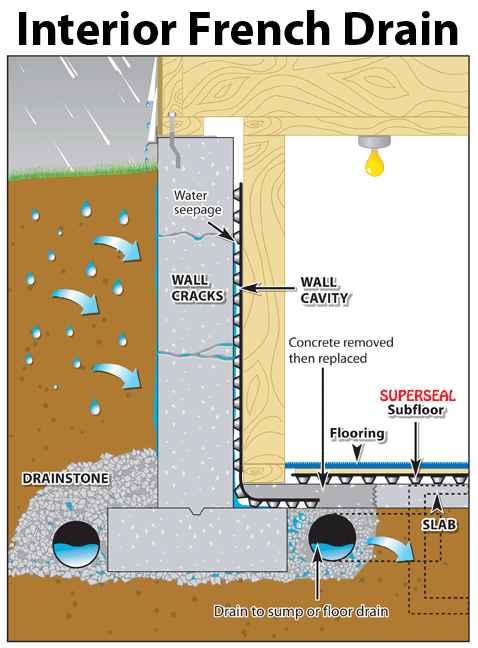John_7951
New Member
This might be a question for a hydrostatic engineer, but I figured I'd start here. Bottom line - I have a high water table under my house. This is consistent with soil boring samples I had done a few years ago. I've opened up the concrete floor in the half basement and crawlspace slab to put in a floor drain. The water level is about 2-3 inches below the thin slab in the crawl space. It's a little higher in the half basement interior side - higher than the crawlspace level. I'm not sure how that is possible but I think the footings are acting as a barrier and collecting more water in the living space side. The half basement is closer to the back yard where the water may be coming from.
I don't have what I would consider a bad dampness problem. The crawlspace gets some dampness at the edges of the slab. The basement is usually dry. There was some intrusion a few years ago when we had a really damp spring.
My question is this - I can pay 10's of thousands of $$$ to have interior perimeter drain tile installed - but will I just end up draining the water table in a futile attempt to empty it? Will I just end up running my sump pump constantly for no real effect - or will the ground eventually dry out under the basement? My house is about 3 feet lower than my neighbors to the east. The ground slopes down to the west over the course of about a mile to the east branch of the DuPage River (Naperville Illinois).
The house was built in 1968 and has 4" clay drain tile on the outside perimeter.
Thanks for any thoughts, advise or directions on where to go next.
John
I don't have what I would consider a bad dampness problem. The crawlspace gets some dampness at the edges of the slab. The basement is usually dry. There was some intrusion a few years ago when we had a really damp spring.
My question is this - I can pay 10's of thousands of $$$ to have interior perimeter drain tile installed - but will I just end up draining the water table in a futile attempt to empty it? Will I just end up running my sump pump constantly for no real effect - or will the ground eventually dry out under the basement? My house is about 3 feet lower than my neighbors to the east. The ground slopes down to the west over the course of about a mile to the east branch of the DuPage River (Naperville Illinois).
The house was built in 1968 and has 4" clay drain tile on the outside perimeter.
Thanks for any thoughts, advise or directions on where to go next.
John




